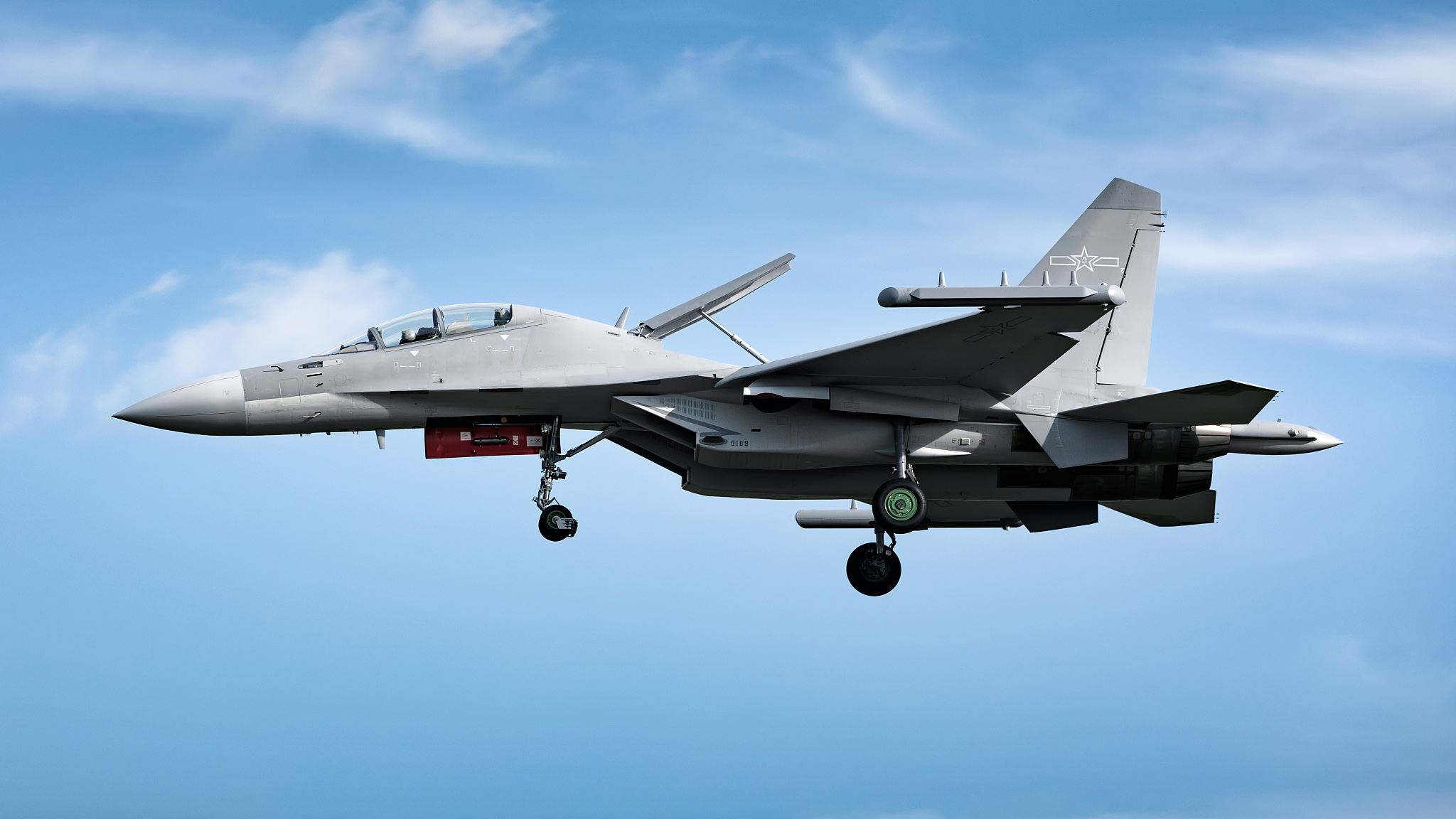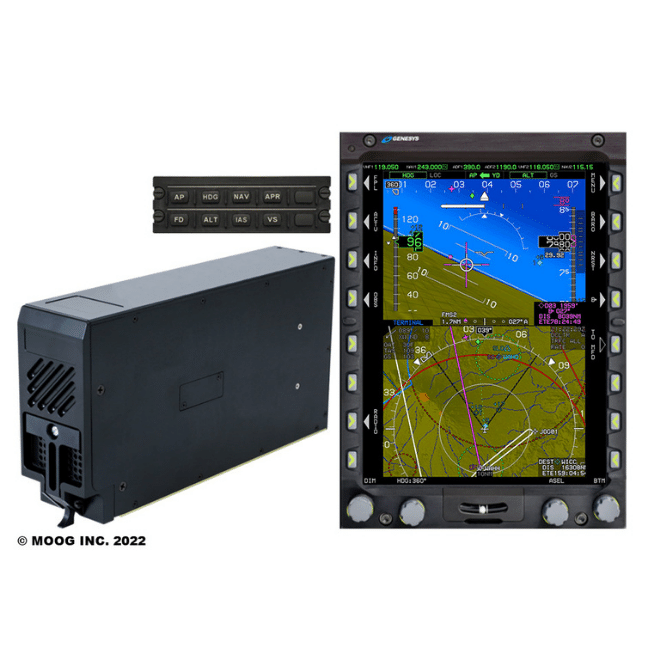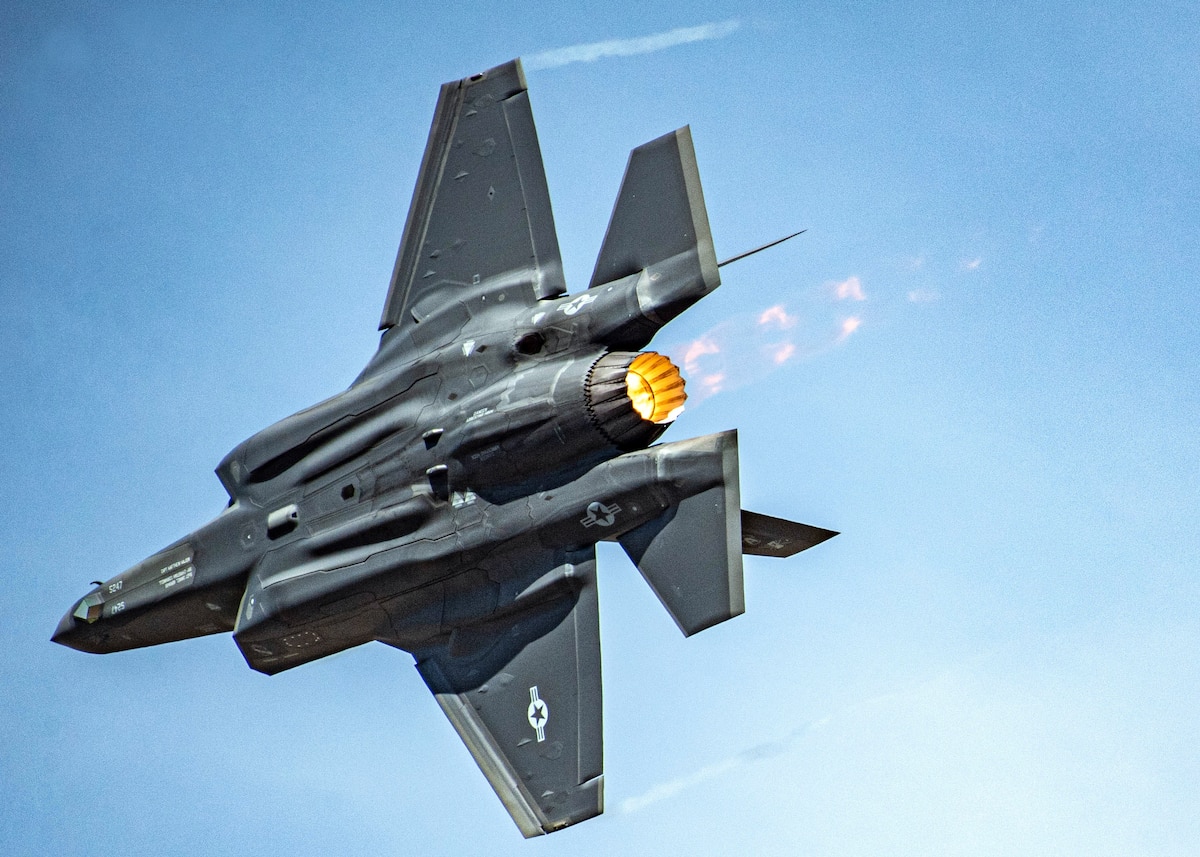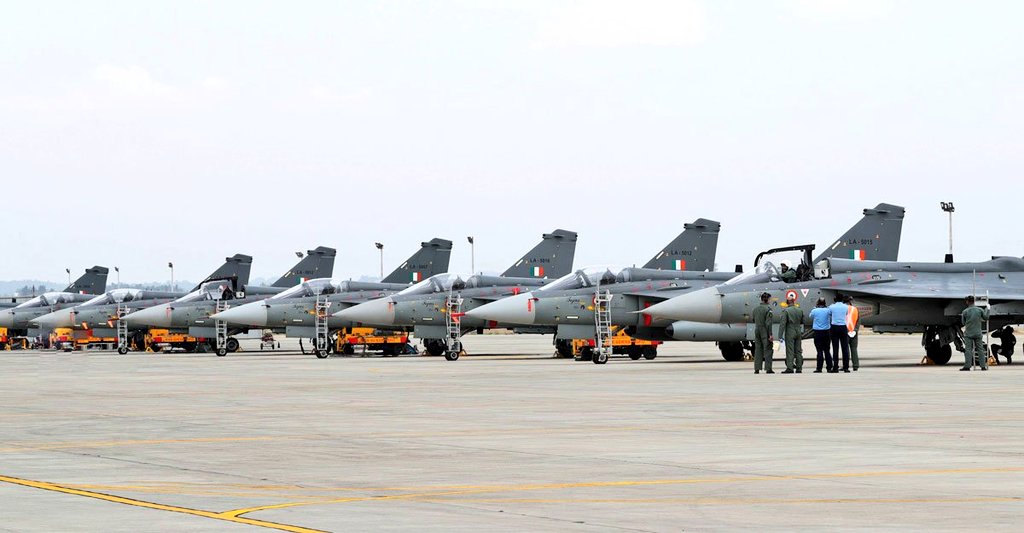AFI
SOURCE: AFI


In recent years, two Chinese fighter aircraft have drawn significant attention in military aviation circles: the fifth-generation J-20 Mighty Dragon, comparable to the F-35, F-22, and Su-57, and the J-16, a multi-role fighter designed to rival Western aircraft like the F/A-18E/F Super Hornet and Russia’s advanced Su-35. Among these, the J-16 is increasingly regarded as the “ultimate Flanker.” But is it truly deserving of this reputation?
The J-16 is one of five Flanker derivatives produced domestically by China’s Shenyang Aircraft Corporation. Its lineage traces back to the Russian Su-27 family, beginning with the J-11, China’s first Flanker variant produced under a license agreement in the late 1990s. Over the years, China transitioned from assembling Russian kits to designing indigenous upgrades, eventually developing the J-11B, a multi-role fighter that marked a departure from Russian reliance.
Continue readingSOURCE: AFI


Nagpur-based Economic Explosives Ltd (EEL) has taken a significant step in advancing India’s unmanned aerial vehicle (UAV) capabilities by establishing a 1.4 km runway and testing facility dedicated to long-range drones. This facility, touted as the largest of its kind in the private sector in India, marks a critical milestone in the nation’s push for indigenous drone development.
The newly established testing facility will serve as a base for trials of the Medium Altitude Long Endurance (MALE) UAV under development by EEL. The company, which previously proposed the development of the MALE UAV for the Indian Armed Forces, aims to leverage this facility to expedite the testing and refinement process for the platform.
Continue readingSOURCE: AFI


In a move to further strengthen its aerial capabilities, the Nepali Army is reportedly considering the acquisition of additional Dhruv Advanced Light Helicopters (ALH) from India’s Hindustan Aeronautics Limited (HAL). This development would be a continuation of the existing relationship where Nepal already operates three Dhruv Mk III helicopters, which have proven invaluable in the country’s challenging geographic landscape.
The Dhruv Mk III, known for its robust performance, comes equipped with Shakti engines, offering significant power for operations in high-altitude environments. This helicopter model features an advanced glass cockpit and sophisticated avionics, making it a versatile asset for the Nepali Army. With a weight class of 5.5 tons, the Dhruv ALH is designed to perform multiple roles, from troop transport and medical evacuation to reconnaissance and rescue operations. Its capabilities in long-distance flights, vertical climbs, and complex manoeuvring make it particularly suited to the rugged and mountainous terrain of Nepal.
Continue readingSOURCE: AFI


A viral video showcasing the Gridbots VIPER robot in action has highlighted its cutting-edge capabilities in cleaning and inspecting artillery and tank gun barrels. Currently being tested by the Indian Army at select locations, this advanced system is poised to replace the manual cleaning process, bringing efficiency, precision, and automation to a critical maintenance task.
The Gridbots VIPER robot is equipped with the zSCAN, one of the most accurate laser 3D profilometers. This advanced tool allows for thorough inspection and cleaning of gun barrels, addressing the needs of artillery, tank guns, and even submarine and airborne weapon systems.
Continue readingSOURCE: AFI


The Indian Navy has unveiled an ambitious roadmap to bolster its maritime capabilities by 2047, aligning with India’s vision to emerge as a major global power by its centenary of independence. With a focus on self-reliance and indigenization, the Navy aims to commission approximately 94 warships in the next decade, underscoring its commitment to securing the nation’s maritime interests and expanding its blue-water operations.
The Navy’s expansion plans are already underway, with 63 warships currently under construction. Remarkably, 61 of these vessels are being built domestically under the Make in India initiative, reinforcing India’s defense manufacturing ecosystem. The remaining two are being constructed in Russia, showcasing the Navy’s balanced approach to sourcing critical assets.
Continue readingSOURCE: AFI


The upcoming Aero India 2025 is set to showcase a detailed scale model of the Tejas MK2, revealing significant enhancements and armament configurations that underscore India’s progress in indigenous aerospace technology. The model, which provides a preview of the aircraft’s capabilities, features an array of advanced weaponry and systems tailored for modern combat scenarios.
The Tejas MK2, designed by the Aeronautical Development Agency (ADA) and manufactured by Hindustan Aeronautics Limited (HAL), will feature 11 hardpoints, allowing for a versatile loadout.
Continue readingSOURCE: AFI


In the early 1990s, amidst the geopolitical tensions of the Cold War’s aftermath, India and Russia embarked on an ambitious joint project to develop an air-to-air missile capable of neutralizing high-value airborne targets like AWACS (Airborne Warning and Control System) aircraft. This missile, known as the K-100, had the potential to significantly enhance the Indian Air Force’s (IAF) combat capabilities, particularly when integrated with the Su-30MKI Flanker aircraft. Here’s a look into what transpired with this project.
The K-100, also known by various names such as Izdeliye 172, AAM-L, KS-172, among others, was a project spearheaded by Russia’s NPO Novator and India’s Defence Research and Development Organisation (DRDO). The primary aim was to create an “AWACS killer” missile with an impressive range of 300 to 400 kilometers, which would have been a game-changer in aerial combat dynamics by allowing fighters to engage high-altitude, radar-equipped aircraft from well beyond standard engagement distances.
Continue readingSOURCE: AFI


In a significant revelation in the realm of international business ethics, the United States Department of Justice has reported that the US-based research and design firm, Moog Inc., engaged in bribery to secure contracts with India’s state-owned aerospace and defense company, Hindustan Aeronautics Limited (HAL). According to the orders issued on October 11, 2024, by the Securities and Exchange Commission (SEC), Moog Inc., through its Indian subsidiary Moog Motion Controls Private Limited (MMCPL), orchestrated payments to HAL officials.
The SEC’s detailed investigation into the matter uncovered that in April 2021, HAL had announced a public tender for aerospace actuators, valued at over $1.3 million. Following this announcement, by May 2021, MMCPL employees were actively discussing the logistics of bribing an HAL official. Internal communications revealed a plan to pay a 2.5% commission, with considerations for immediate and staggered payments to ensure the disqualification of other bidders. “By any means, we must take the order of HAL,” was a sentiment echoed among the employees, highlighting the desperation to win the tender.
Continue readingSOURCE: AFI


Meghalaya’s Director General of Police, Idashisha Nongrang, has reported the detection of Bayraktar TB2 unmanned aerial vehicles (UAVs) near the towns of Sohra and Shella in the East Khasi Hills district, close to the India-Bangladesh border. This development has raised significant security concerns, especially given the current political turbulence in Bangladesh.
The UAV in question, identified by the transponder code TB2R1071, was reportedly launched from the Tejgaon Airbase in Bangladesh. The Bayraktar TB2, crafted by the Turkish company Baykar, is renowned for its dual-use capabilities, offering both surveillance and precision strike options. These drones have an operational range of 300 km and can fly for up to 27 hours, making them a formidable asset for reconnaissance and potential combat missions.
Continue readingSOURCE: AFI


A joint operation by the Indian Army and Assam Rifles, under the Spear Corps, has resulted in the recovery of a significant cache of weapons and a surprising piece of technology: a Starlink antenna. The operation, conducted based on specific intelligence, targeted hill and valley regions across several districts in Manipur, including Churachandpur, Chandel, Imphal East, and Kagpokpi.
The security forces coordinated closely with the Manipur Police and other agencies during the search. The recovered weaponry included a range of items, from sniper rifles and automatic weapons to pistols, country-made mortars, single-barrel rifles, grenades, ammunition, and other war-like stores.
Continue readingSOURCE: AFI


As aerial warfare evolves, Beyond Visual Range Air-to-Air Missiles (BVRAAMs) are becoming critical for ensuring air superiority. While Russia has long been a pioneer in air-to-air missile technology, its current inventory of BVRAAMs, such as the R-77 (NATO: AA-12 Adder), is increasingly viewed as outdated in terms of range and accuracy compared to modern Western and Asian systems. This has opened a potential opportunity for India’s Astra Mk1 and MkII missiles to be integrated into Russian-origin platforms like the MiG-29 and Su-30 family, which are extensively operated worldwide.
The R-77, once a trailblazer, has fallen behind modern counterparts such as the American AIM-120D AMRAAM and European Meteor. With a range of approximately 80–110 km, it struggles to compete with newer designs offering extended ranges, better kinematics, and superior resistance to countermeasures.
Continue readingSOURCE: AFI


The Quadrilateral Security Dialogue, or QUAD, comprising the United States, Japan, Australia, and India, has been pivotal in shaping strategic dynamics in the Indo-Pacific region. Each member, except India, has integrated or is in the process of integrating the Lockheed Martin F-35 Lightning II into their military forces, raising questions about India’s exclusion from this particular technology transfer.
India has historically maintained a policy of strategic autonomy, which sometimes conflicts with deep military alliances or dependency on foreign technology. The Indian Air Force (IAF) and the defence establishment have been cautious about technologies that could bind India too closely to any one power, especially in terms of maintenance, upgrades, and operational control.
Continue readingSOURCE: AFI


In 2023, Poland continued to import a variety of arms and ammunition from India, with the total value of these imports reaching US$456.23 thousand, as per the data from the United Nations COMTRADE database. This import activity highlights a niche but significant aspect of the trade relationship between India and Poland, focusing on defense and security equipment.
These imports, though modest in scale, reflect a strategic alignment where Poland might be looking to diversify its defense suppliers, potentially as part of broader security policies or to foster international relations with India in the context of the EU and NATO frameworks.
Continue readingSOURCE: AFI


In the high-stakes environment of aerial dogfights, where every move can mean the difference between life and death, the act of surrender is as dramatic as it is rare. While there are no official written rules for surrendering during a dogfight, certain actions have been recognized over time as signals of capitulation.
One of the most surprising methods for a fighter pilot to signal surrender is by lowering their landing gear while still in flight. This action, visible to any pursuing enemy aircraft, serves as a universal sign of yielding, indicating to the adversary that the pilot wishes to stop fighting and be escorted to the nearest military airbase. This gesture, though not formally documented in military protocols, has been acknowledged in various conflicts as a plea for mercy, urging the opponent to cease hostilities.
Continue readingSOURCE: AFI


In a significant move to bolster its air defense capabilities along its western frontier with Pakistan, the Indian Air Force (IAF) has strategically deployed its Final Operational Clearance (FOC) Tejas Mk1 fighters. This deployment comes as part of an operational strategy that also sees the gradual retirement of the aging MiG-21 fleet, with a full withdrawal planned by 2026.
The IAF has recently moved its FOC Tejas Mk1 from its southern bases to the western sector, particularly to support operations at the Jamnagar Air Force Station. This station has become a focal point for integrating new and existing assets as the MiG-21s, known for their extensive service but now nearing the end of their operational life, scale back their activities. The Tejas, with its modern avionics and combat capabilities, is seen as a direct replacement and enhancement to the MiG-21’s role.
Continue reading